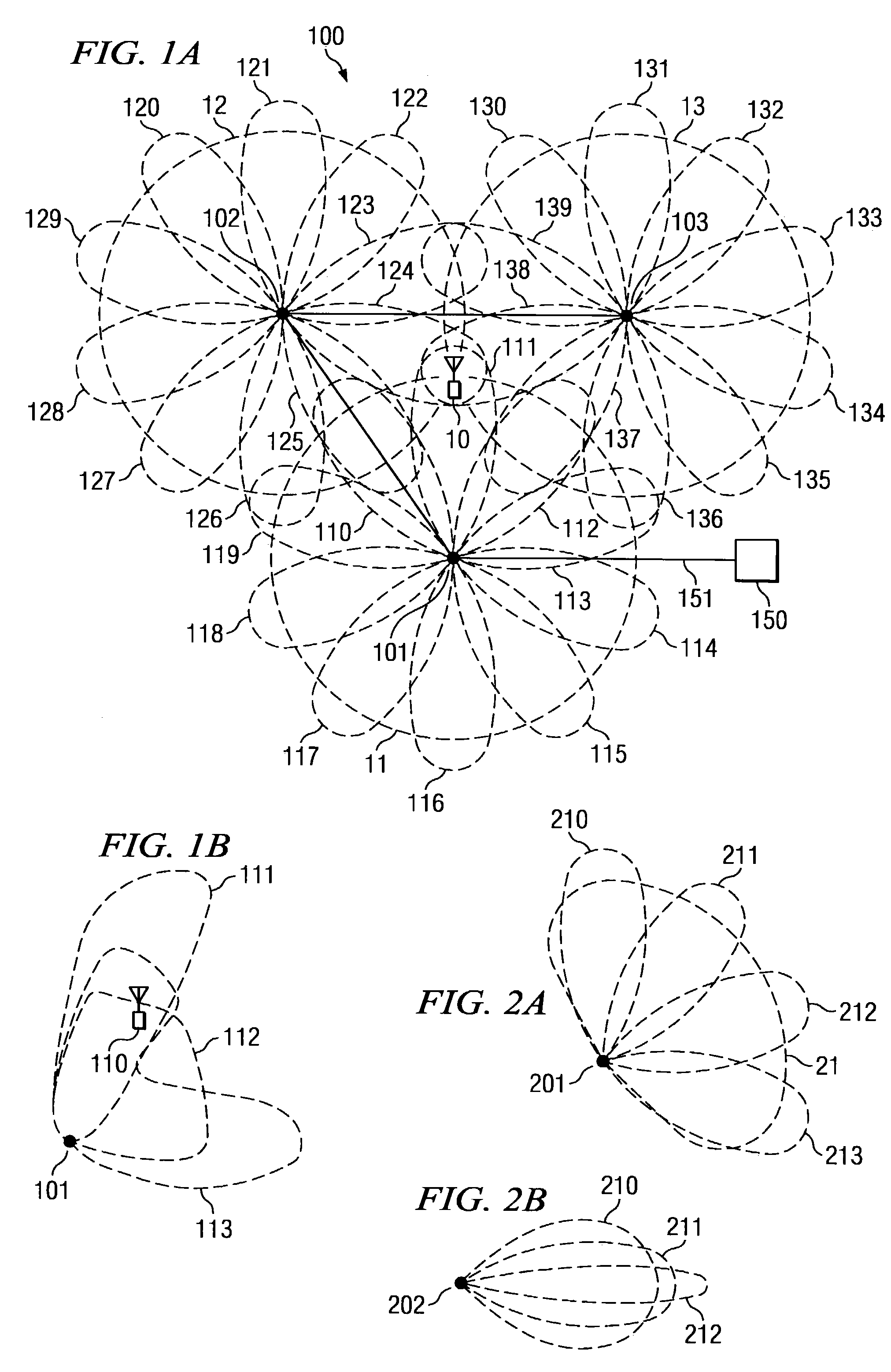Location positioning in wireless networks
a wireless network and wireless technology, applied in the field of wireless communication, can solve the problems of inability to use indoors or even in the cabin of a boat, high complexity and cost, and inability to meet the needs of gps receivers,
- Summary
- Abstract
- Description
- Claims
- Application Information
AI Technical Summary
Benefits of technology
Problems solved by technology
Method used
Image
Examples
Embodiment Construction
[0026]Directing attention to FIG. 1A, an exemplary wireless network system is shown as network 100. It should be appreciated that network 100 may comprise a portion of a WLAN, WMAN, cellular network, satellite network, and / or the like. However, to better aid the reader in understanding the concepts of the present invention, reference herein shall be made to an embodiment wherein network 100 comprises a portion of a WLAN or WMAN and, therefore, terminology consistent with such a wireless network is used. It will readily be understood by one of skill in the art that the relevant wireless network aspects discussed herein have corresponding structure in other wireless network configurations and, therefore, implementation of the present invention with respect to such other wireless network configurations will readily be understood from the disclosure herein. For example, wireless access nodes are present in each of the foregoing wireless networks, although perhaps referenced using a diff...
PUM
 Login to View More
Login to View More Abstract
Description
Claims
Application Information
 Login to View More
Login to View More - R&D
- Intellectual Property
- Life Sciences
- Materials
- Tech Scout
- Unparalleled Data Quality
- Higher Quality Content
- 60% Fewer Hallucinations
Browse by: Latest US Patents, China's latest patents, Technical Efficacy Thesaurus, Application Domain, Technology Topic, Popular Technical Reports.
© 2025 PatSnap. All rights reserved.Legal|Privacy policy|Modern Slavery Act Transparency Statement|Sitemap|About US| Contact US: help@patsnap.com



